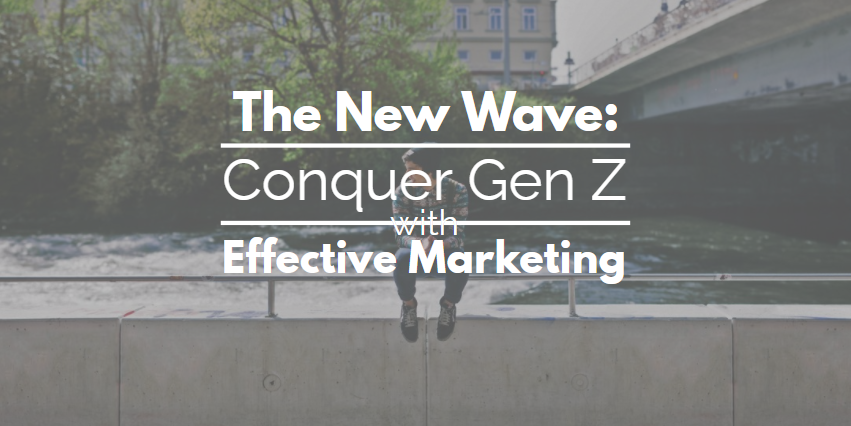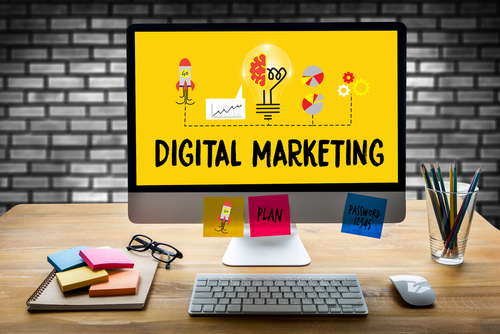“Millennials are just a bunch of spoiled brats!”
The clamor against the Millennial generation, or Gen Y, has been a long-standing argument between the Baby Boomers and their successors. Not only did the coming of this new generation stir up the older generation and their way of living, but they also changed the way content marketers do marketing.
Now, with the arrival of an even younger demographic, Generation Z, marketers face a new challenge. Gen Zers are currently the youngest generation having been born on or after 1996. They are also the first digitally-oriented flock with their smartphones, laptops, and of course, the internet. Marketing tactics like voice search and maps marketing are even more prevalent than ever before.
The Post-Millennials are growing up. They’re taking up a bigger and bigger slice of the world’s consumer base, and Gen Xers are a tricky group. Think of them as a demographic stuck between getting ready for college applications and being full-fledged adults. Generation Z is the next big focus for a lot of brands and marketers, so should you.
Here are five things you should do to keep up with the new wave of consumers.
Let’s Get Real
It’s getting harder and harder to speak to Generation Z. They are blocking more ads through prevalent ad blockers. You might as well call them the ad-blocking generation. In fact, 31% of Gen Zers have ad blockers installed.
Traditional advertising focuses on making ads that speak to an audience through carefully crafted messages. But Generation Z will have nothing to do with it. Instead, they would rather hear from real people in real-life situations.
Post-Millennials want authenticity and reliability. It’s becoming a branding identity and marketing strategy. Reliability makes consumers feel like they’ve come to the right place and the right people. The key is to connect and encourage interaction.
Keep Up With Social Media
Generation Z is the first generation to have been born without knowing how life was before the digital age. Hence, the term “digital natives.” While Millennials pioneered Facebook and MySpace, Gen Z prefers platforms that are more personal, private, and uplifting.
Before, career success, relationships, and financial prosperity played central roles in one’s happiness. But according to the Center for Generational Kinetics, 42% of Post-Millennials feel that social media directly impacts how they feel about themselves.
To connect with Generation Zers, use your brand to lift them up. Make them feel good about themselves.
Create an Impact
As we know, most Gen Zers barely give promotional content the time of day. They’ve never lived a life without the internet, making them the most technologically adept generation. They know heavily sponsored content when they see one. And they know what their attention is worth.
Gen Zers expect your brand to have an impact, be it on the environment, or for social causes. They want to make a difference. A whopping 60% of Post-Millennials want their jobs to impact the world, and 76% are concerned about how humans are affecting the planet.
If they’re concerned about making a stand and changing the world, they also expect your brand to do the same. Take a cue from some established brands, such as Toms, dedicated to providing shoes, water, etc. to those in need for every purchased pair.
Don’t Beat Around the Bush
Yes, attention spans are getting shorter than ever. From the reported 12 seconds, it has now declined to a mere eight! This reality means that marketers will have to work twice as hard in creating creative content that immediately engages the audience. But, it isn’t all bad news.
Think of today’s scenario: On average, Millennials use three gadgets simultaneously, from TV screens, laptops, and tablets. On the other hand, Gen Zers use about five screens at the same time.
If you present information that is fast, concise, and compelling, it increases the chances of young people sharing your content. It’s a win-win situation. You get to craft better content and gather more shares.
Go Digitally Native
The secret to capturing the Post-Millennial’s attention is through involvement. That’s it. Gen Z was raised on technology, feeding off smartphones and social media and they know how to weed unauthentic ads from the genuine ones.
Peer to peer involvement is crucial. Connect with your Gen Z consumers by making them a part of your products’ development. Through this strategy, you can build relationships and bridge the gap between the younger generation and your brand. No matter how much research you do, it will not be able to replace first-hand involvement.
Takeaway
In this day and age, you can say that Generation Z and technology are the same things. Have you ever seen a toddler playing games on an iPhone? It’s a fascinating phenomenon.
Gen Z grew up with technology from the start, and that’s what makes them a trickier bunch to market. Be authentic and relatable. Show your intentions on making an impact with your brand. And most importantly, build relationships and meet Gen Z through the bridge that you’ve created.
Read also:

























